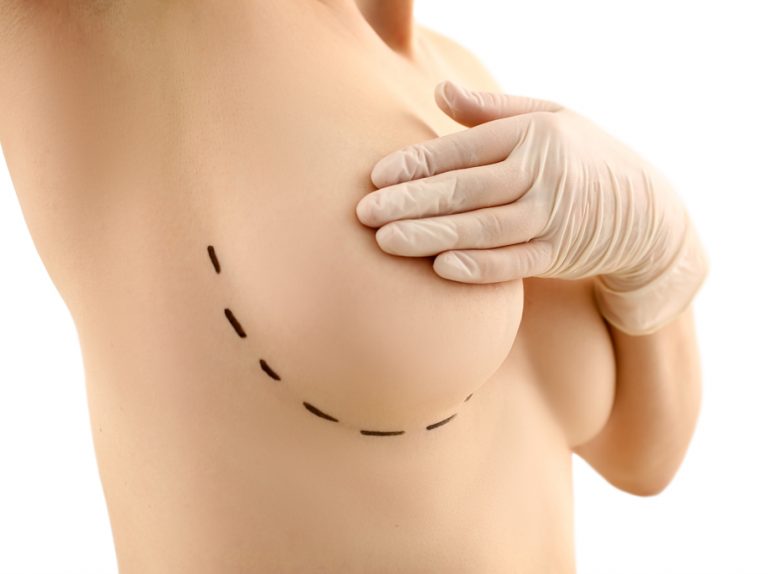Liposuction Surgery Essentials: Techniques, Recovery & Risks
Posted on: December 28, 2023
Liposuction surgery, performed by a plastic surgeon, stands at the forefront of cosmetic medicine, offering a path to redefine body contours and assist with weight loss where diet and exercise fall short in removing excess fat. Liposuction procedures are not just about weight loss; they’re a precise plastic surgery technique that sculpts the appearance with strategic fat removal, differing from traditional liposuction. Yet, while visions of transformation dance in heads hooked up to IVs, it’s crucial for those considering plastic surgery procedures to ground their expectations in reality—a surgeon performing tumescent liposuction is offering a refinement, not an overhaul.
Understanding its role in shaping your silhouette can be empowering, but diving into tumescent liposuction without recognizing its limits might lead you astray from achieving your desired results. Consulting with a skilled surgeon or dermatologist specializing in dermatology can provide insight into this procedure’s potential.
Understanding the Liposuction Procedure
Fat Removal
Liposuction removes fat from your body using suction. In liposuction procedures, a surgeon inserts a thin tube, known as a cannula, through small incisions in the skin. This technique is common in both tumescent liposuction and traditional liposuction. The dermatologist moves it around under your skin during the tumescent liposuction procedure to target fat deposits in the field of dermatology. Then, the surgeon or dermatologist performing the tumescent liposuction suctions out the fat using a vacuum or syringe attached to the cannula, with the provider ensuring optimal results.
This method does not remove large quantities of weight. Tumescent liposuction, performed by a dermatologist or surgeon provider, specifically targets areas where fat accumulates like hips, thighs, and abdomen. Consider tumescent liposuction as a method of contouring these areas, performed by a qualified surgeon or dermatologist, rather than seeking significant weight loss from this provider.
Weight Loss Surgery
Liposuction, performed by a surgeon and sometimes in consultation with a dermatologist et al, is not a weight-loss surgery such as gastric bypass or sleeve gastrectomy. Tumescent liposuction, performed by a dermatologist et al, reshapes specific areas by removing excess fat, unlike those surgeries which alter your digestive system to limit food intake or reduce nutrient absorption.
In contrast, liposuction, often performed by a dermatologist, focuses on aesthetic improvement by removing stubborn pockets of fat that don’t respond well to diet and exercise alone. Tumescent liposuction is best for individuals near their ideal body weight who want to refine certain areas, as recommended by a dermatologist.
Anesthesia Use
During liposuction surgery, a dermatologist ensures anesthesia keeps you comfortable and pain-free. There are two main types: local and general anesthesia.
- Tumescent liposuction, performed by a dermatologist, uses local anesthesia to numb only the targeted area, allowing you to remain awake without feeling pain.
- General anesthesia puts you completely asleep during the procedure.
The choice depends on various factors including health history and personal preference; plus how extensive your liposuction will be. Your doctor will discuss which option is best for you before surgery day arrives.
Areas Targeted by Liposuction Treatment
Common Regions
Liposuction is a popular solution for removing fat deposits from specific areas of the body. The abdomen, thighs, and arms are common regions where people seek to eliminate stubborn fat. These spots often resist traditional weight-loss methods like diet and exercise.
For many, these areas can be frustrating. For instance, someone might work out regularly yet find their abdomen still holds onto fat. Liposuction targets these trouble zones directly. It breaks down and removes the fat cells that are difficult to lose otherwise.
Gender Neutrality
Both men and women can benefit from liposuction treatment. This procedure isn’t limited by gender; it’s about addressing problem areas on one’s body regardless of sex.
Men might focus on reducing love handles or achieving a more defined abdomen, while women may wish to contour their thighs or buttocks for a smoother silhouette. Each person has unique goals with liposuction targeting those specific needs effectively.
- Commonly targeted areas include:
- Abdomen
- Thighs
- Arms
- Benefits of targeting these areas:
- Reduces appearance of cellulite in some cases.
- Helps sculpt the area more than diet and exercise alone.
The suitability of this treatment makes it versatile for different body types and aesthetic desires across genders.
Types of Liposuction Techniques
Tumescent Technique
The tumescent technique is a common method. It uses a solution before removing fat. The solution makes the area swell and stiffen. This helps reduce blood loss and pain.
Doctors inject the mixture into the targeted areas. It contains saline, lidocaine, and epinephrine. These ingredients shrink blood vessels and numb the site.
Ultrasound-Assisted
Ultrasound-assisted liposuction (UAL) uses sound waves to break up fat cells. A special cannula emits these waves under your skin.
This technique is good for dense, fibrous body parts. Think of areas like the back or male breast tissue. UAL makes it easier to remove tough fat from these spots.
Laser-Assisted
Laser-assisted liposuction (LAL) involves lasers to liquefy fat cells before removal. Doctors insert a laser fiber through small incisions in your skin.
The heat from the laser also promotes collagen production, which can help tighten your skin post-surgery.
Choosing a technique depends on many factors:
- Your health.
- The amount of fat you want removed.
- Specifics about each method’s recovery time and results.
Consult with professionals to find what suits you best.
Technology has greatly improved liposuction methods over time:
- Safer procedures with less risk of complications.
- More precise targeting of specific body areas.
- Shorter recovery times for patients after surgery.
- Better overall outcomes with smoother contours following treatment.
Preparing for Your Liposuction Journey
Health Evaluations
Before undergoing liposuction surgery, a thorough health check is essential. You’ll meet with your provider to discuss your medical history and current health. They will assess whether you’re fit for the procedure. This might include blood tests or other exams.
You should be open about any health conditions you have. It’s important because some conditions can affect how well you heal. If everything checks out, your provider will clear you for surgery.
Medication Management
Part of getting ready involves managing medications. Your doctor may advise stopping certain medicines before the operation. These could increase bleeding risks or react poorly with anesthesia.
Make a list of all medicines, including over-the-counter ones, that you take regularly. Share this list during your pre-surgery consultation so they can guide properly which ones to pause.
Post-Op Planning
After liposuction, it’s crucial to have support in place at home and for getting back from the hospital. Arrange someone to drive you as driving won’t be safe right after surgery due to anesthesia effects and potential pain.
Also plan who will help around the house while recovering since returning immediately to work isn’t possible in most cases. Prepare a comfortable recovery area with necessities within easy reach. Remember that proper care post-op helps achieve desired goals faster and safer.
The Liposuction Surgical Process
Surgery Preparation
On the day of surgery, arriving at the surgery center starts your journey. You’ll meet with the surgical team who will guide you through each step. They ensure everything is ready for a safe and successful procedure.
First, they mark the areas on your body where fat will be removed. This helps them plan how to approach the operation. Next, they prepare you for anesthesia to keep you comfortable during surgery.
Fat Removal
The actual fat removal process begins with small incisions near targeted areas. Through these openings, a solution may be infused if it’s a tumescent liposuction; this technique reduces blood loss and eases fat suction.
Then, using a tool called a cannula connected to a vacuum device, the surgeon breaks up and suctions out fat from beneath your skin. The process requires skill and precision by an experienced plastic surgeon.
Team Support
Throughout this surgical procedure, various members play crucial roles. Nurses monitor vital signs while assisting surgeons directly in their tasks.
Anesthesiologists oversee pain management ensuring you are stable throughout the cosmetic surgery. Their expertise is essential in both local or general anesthesia cases.
Recovery and Results Post-Liposuction
Healing Timeline
After the liposuction surgical process, recovery begins. Patients typically wear a compression garment for several weeks. This helps reduce swelling and shapes the body.
In the first week, expect significant soreness. Activities should be light. By week two or three, you may return to work if it’s not physically demanding. However, keep in mind that full healing takes time.
Swelling Management
Swelling is part of healing after liposuction surgery. It can mask your results initially. Full results often take a few months to appear as swelling subsides.
To manage expectations:
- Expect immediate post-operative swelling.
- Understand final results are not instant.
- Regularly check progress with follow-up images.
It’s crucial to be patient during this period for both your health and satisfaction with the outcomes.
Follow-Up Care
Follow-up appointments are key for optimal recovery from liposuction surgery. Your doctor will monitor your progress and guide you through recovery steps.
Here’s why they’re important:
- They ensure proper healing is occurring.
- Any issues can be caught early on.
- You get professional advice tailored to your situation.
Adhering strictly to these appointments maximizes chances for excellent results post-liposuction surgery.
Risks and Safety in Liposuction Surgeries
Common Risks
Liposuction is a popular procedure. Yet, it has risks like any surgery. Infection and bruising are common after liposuction. These issues usually heal with time and proper care.
Doctors work to keep patients safe. They follow clean practices to prevent infection. They also advise on how to reduce bruising post-surgery.
Serious Complications
Some people face serious complications from liposuction. Embolism and nerve damage can happen but are rare.
Surgeons take steps to avoid these problems:
- They review medical histories carefully.
- Surgeons plan the procedure well.
- During surgery, they monitor closely for signs of trouble.
These actions help lower the chance of severe issues.
Minimizing Risk
Surgeons use various measures to minimize surgical risks:
- Pre-surgery consultations check health conditions.
- Detailed planning tailors the approach for each patient.
- Modern equipment reduces chances of complications.
These precautions make liposuction safer for everyone involved.
Longevity and Maintenance of Liposuction Results
Lifestyle Influence
After liposuction surgery, the lifestyle choices you make are crucial. They can either maintain or diminish the results. A healthy lifestyle helps keep fat cells from growing back in treated areas. This includes eating right and staying active.
To ensure long-lasting results:
- Stick to a balanced diet.
- Include regular exercise in your routine.
These steps help control weight and shape after surgery.
A poor lifestyle choice can lead to weight gain. Gaining weight affects how long liposuction benefits last. The remaining fat cells can grow, changing the body’s contour.
Consistent Management
Maintaining your new figure requires consistent effort. It’s not just about losing fat during surgery; it’s also about keeping it off afterward.
Here’s what you should do:
- Follow a balanced diet with plenty of fruits, vegetables, lean proteins, and whole grains.
- Exercise regularly with both cardio workouts and strength training exercises.
This regimen will help you manage your post-surgery body better.
If you gain weight after liposuction, it might show up in different areas first before affecting the treated spots. However, significant weight gain will alter even these regions over time.
Conclusion: Embracing the Change with Liposuction
Liposuction isn’t just a procedure; it’s your stepping stone to a revamped self-image. You’ve got the lowdown on everything from the nitty-gritty of the surgery to the wonders of post-op transformation. Armed with knowledge about targeted areas, diverse techniques, and recovery expectations, you’re all set to make an informed choice. Sure, there are risks, but that’s where your savvy decision-making kicks in. And once you’re through, maintaining those sleek contours is in your court—healthy lifestyle choices are your best ally for lasting results.
Ready for a change? Take the plunge and chat with a trusted surgeon. Your journey to confidence is just a consultation away. Remember, it’s not just about looking good; it’s about feeling unstoppable. Go on, seize the day and let liposuction unlock a bolder, more vibrant you!
Frequently Asked Questions
What is liposuction surgery?
Liposuction is a cosmetic procedure that removes fat from specific body areas, aiming to contour and reshape them.
How does the liposuction procedure work?
In liposuction, fat is suctioned out through small incisions using a cannula and a medical vacuum or syringe.
Which body areas can be treated with liposuction?
Commonly targeted areas include the abdomen, thighs, buttocks, arms, neck, and under the chin.
Are there different types of liposuction techniques?
Yes, there are several techniques like tumescent, ultrasound-assisted (UAL), laser-assisted (LAL), and power-assisted liposuction (PAL).
How should I prepare for my liposuction surgery?
Your surgeon will guide you on diet restrictions, medication adjustments and suggest stopping smoking before surgery to ensure optimal results.
What can I expect during recovery from liposuction?
Expect some swelling, bruising and discomfort post-procedure. Recovery time varies but generally includes rest followed by gradual return to normal activities.
Are there risks associated with liposuction surgeries?
Like any surgery, risks include infection, bleeding or more serious complications; however choosing an experienced surgeon minimizes these risks significantly.
How long do results from a liposuction last?
Results can be long-lasting if you maintain a stable weight through healthy lifestyle choices.





